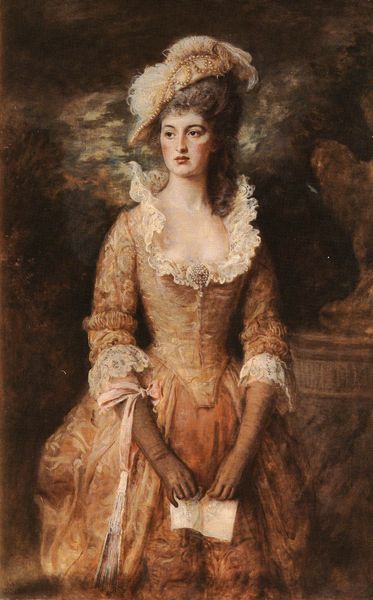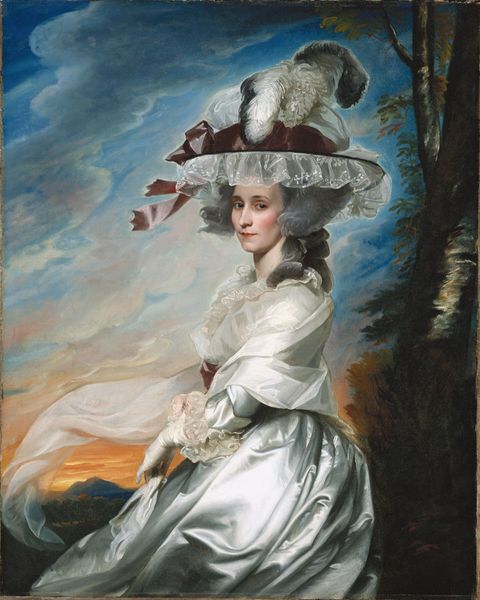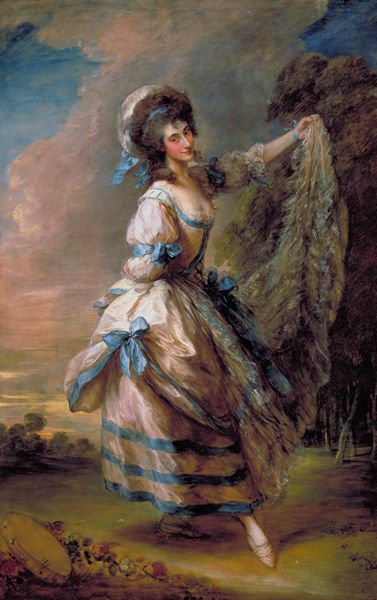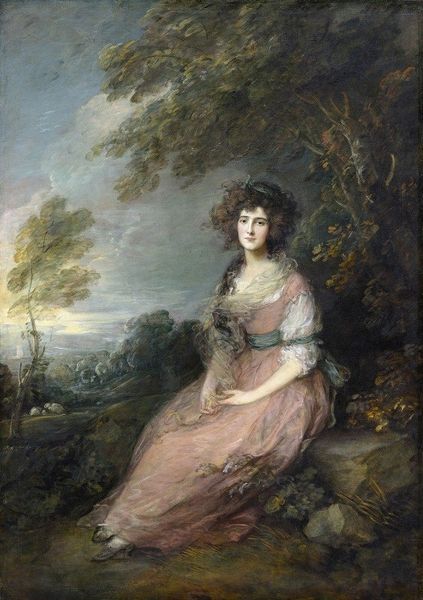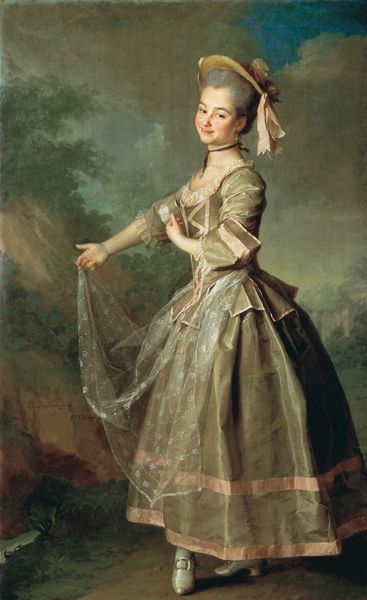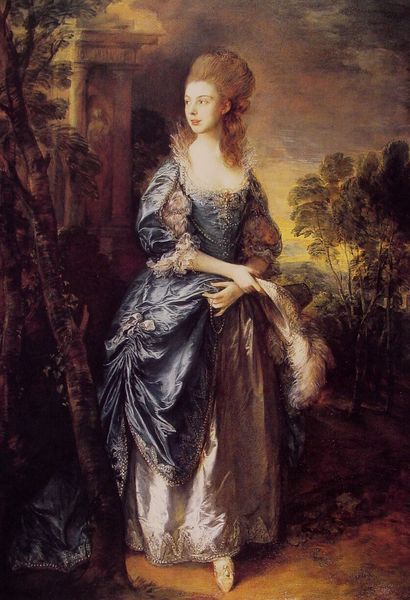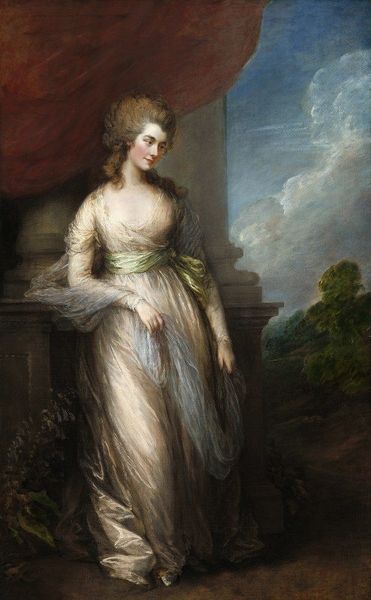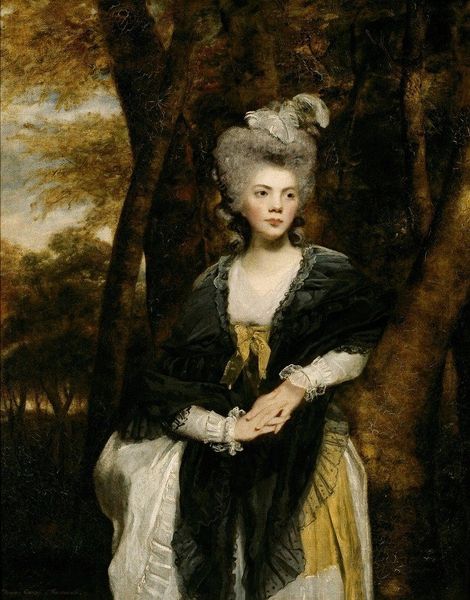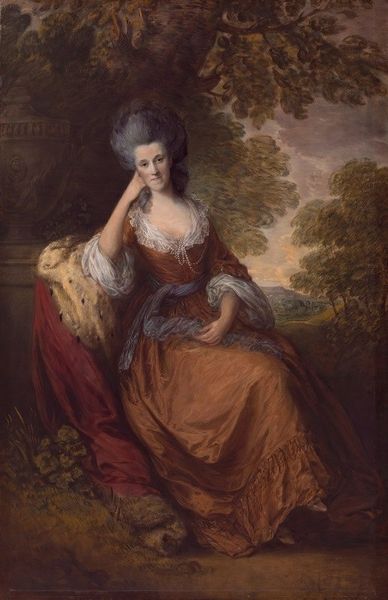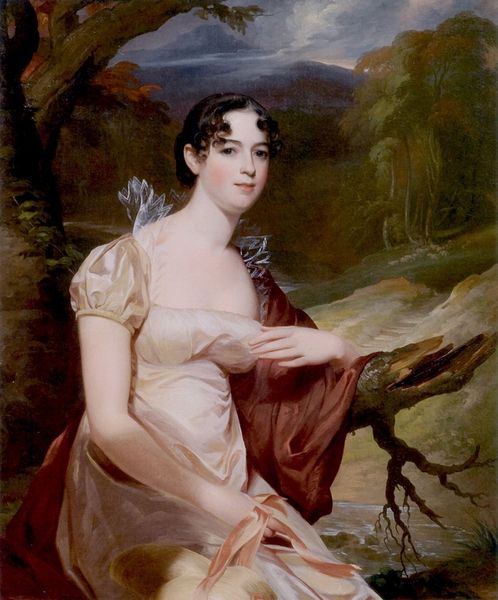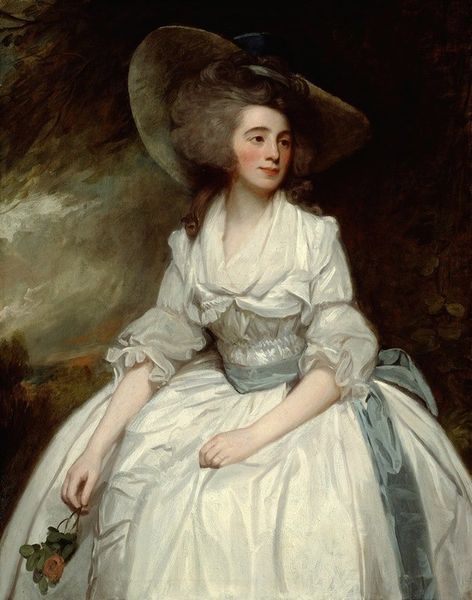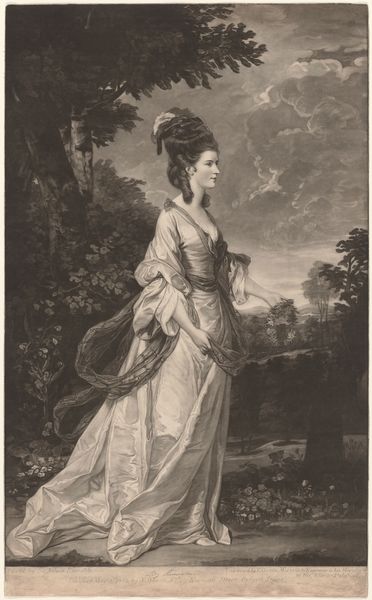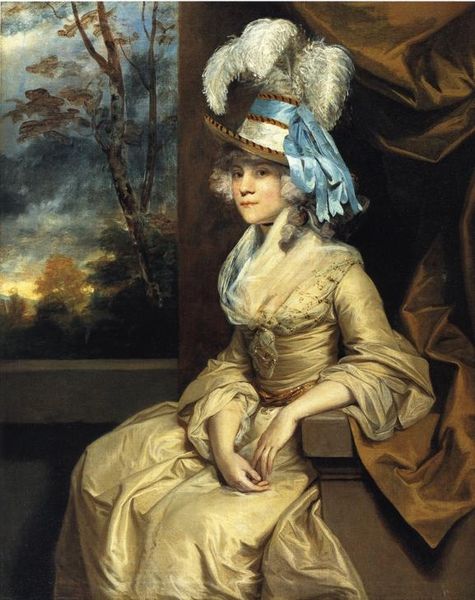
Dimensions: 244 x 152.4 cm
Copyright: Public domain
Editor: Here we have Thomas Gainsborough's "Portrait of Mary Countess Howe" from 1760, an oil painting that presents its subject within a rather subdued, almost melancholic, natural landscape. I'm intrigued by the way she seems both present and distant. What stands out to you? Curator: It's fascinating how Gainsborough uses visual cues to construct Countess Howe’s identity, isn’t it? Notice the soft, flowing lines of her gown mirrored in the swaying tree beside her. Both convey a certain delicacy and aristocratic refinement, wouldn't you agree? And what do you make of the relatively dark, turbulent sky in contrast to her light dress? Editor: I guess it’s setting the stage, contrasting her personal refinement against the more turbulent world around her. Is it also a representation of power? Curator: Exactly! While the pastoral setting speaks of leisure and landed gentry, there is perhaps a subtle suggestion that even those seemingly untouched by the storms of life are, in some way, marked by them. Gainsborough implies status and social narrative within a framework of emotional restraint and careful use of landscape. Do you notice the almost symmetrical design, where the Countess, though bathed in soft light, is very central? Editor: Yes! I see how that understated symbolism actually emphasizes her position. It's much more powerful than, say, putting her in front of obvious symbols of wealth or authority. Curator: Precisely! The beauty of imagery lies in how it invites the viewer to engage with both conscious and unconscious associations. Editor: I've definitely learned to see beyond just the surface presentation! Curator: As have I, your perspectives have enriched my insight into the subject's position!
Comments
No comments
Be the first to comment and join the conversation on the ultimate creative platform.
